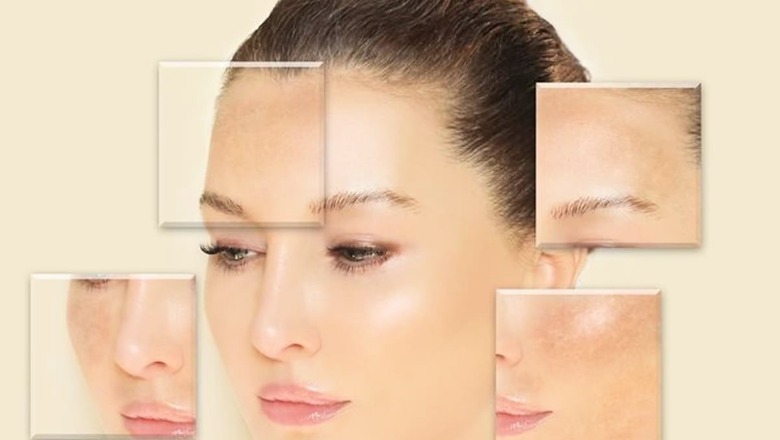
views
Dark spots on your skin? Blame it on the constant sun exposure. An increase in melanin production leads to darkening of certain areas and thus hyperpigmentation. Sun exposure, hormonal changes and skin trauma can lead to darkening of skin in some patches.
Soumya Sachdeva, consultant dermatologist, cosmetologist and hair transplant specialist, Chicnutrix says, “Hyperpigmentation leads to dark patches on your skin, which typically occur when your skin produces excess melanin. Any skin type may be affected; however, it is more likely to occur as a secondary response to any kind of injury, post-inflammation, pregnancy, or old age.”
Common causes of focal hyperpigmentation include freckles, lentigines, post-injury marks, post-inflammatory hyperpigmentation, phyto-photodermatitis, melasma, café-au-lait macules, and acanthosis nigricans.
Professor of pharmaceutical sciences and technology, Sunday Skin opines, “Skin pigmentation and coloration are governed by the biological processes involving the production of the skin pigment called melanin produced by melanocytes in various layers of skin. Thus, alterations in melanocyte production or distribution of melanin result in skin hyperpigmentation disorders. Exposure to the sun’s UV rays is a big reason for the same. There are many topical agents used for the treatment of hyperpigmentation – Arbutin, a derivative of hydroquinone (a gold standard for hyperpigmentation treatment) but with much lesser melano-toxic effects acts by inhibiting tyrosinase along with inhibition of melanosome maturation.”
The most common causes of widespread hyperpigmentation include drugs, cancers, and systemic disorders. The treatment of hyperpigmentation is based on using sunscreen with an SPF of 30 with PA +++ or higher as the primary treatment. It should be applied in the morning, for example, at 8 am, followed by reapplication every 4 hours.
Treatment varies depending on the type of hyperpigmentation, and your doctor will typically prescribe topical creams containing glycolic acid, kojic acid, hydroquinone, arbutin, vitamin C, azelaic acid, or retinoids. In addition, various cosmetic treatments such as laser therapy and chemical peels may be required depending on the condition.”




















Comments
0 comment